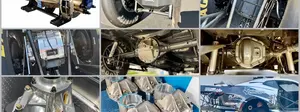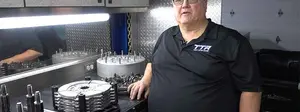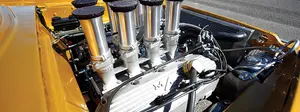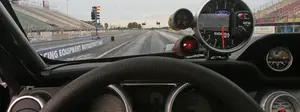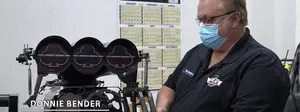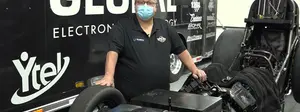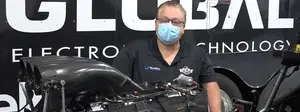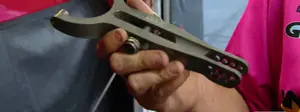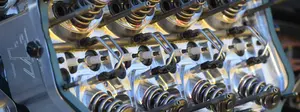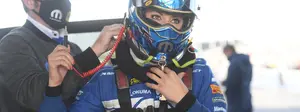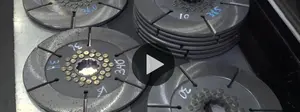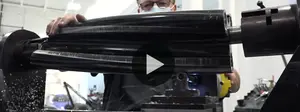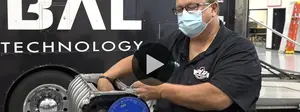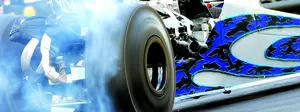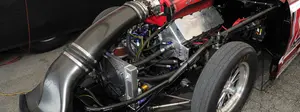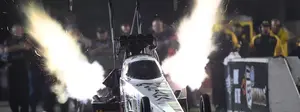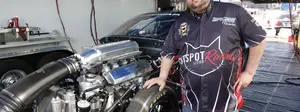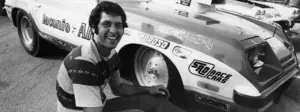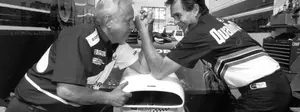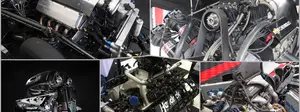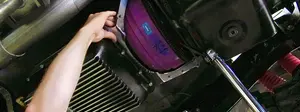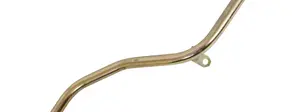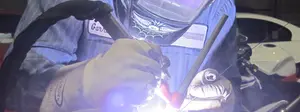

Weld Racing's drag racing wheels—explained
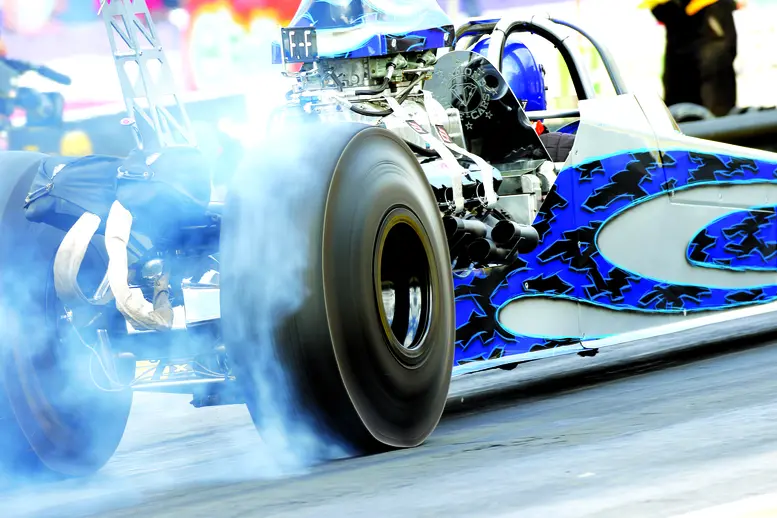
Drag racers are forever experimenting with ways to accelerate a vehicle from a standing start and cover the distance of the track in the most efficient manner. Over time, racers have asked many questions, created new theories, and ultimately found solutions to get the desired results for maximum acceleration and the quickest elapsed times. Commonly, they add horsepower, drop weight, reduce parasitic drag, or employ all three.
On this topic, one of the simplest things any racer can do to improve performance is to trade the stock or outdated wheels on their car for a set of performance wheels. This will effectively lighten the load, reduce parasitic drag, and improve the look of the car, truck, or motorcycle. It’s a triple win.
Like a vehicle’s paint or graphics, wheels make a visual statement, so they are an important part of the appearance package. There are a myriad of wheel designs and sizes to choose from, so it’s important to do your research. This means finding wheels that fit properly, don’t exceed your budget, and give you the most performance and durability.
To learn more about modern racing wheels, we turned to Josh Hamming, Technical Sales Specialist—Drag Race & Street/Strip at Weld Racing. Weld is a leading manufacturer of high-performance wheels for street, strip, and all forms of motorsports with decades of experience and manufacturing that takes place here in the USA, and Hamming was able to answer all of our questions.
What factors should a racer consider when selecting and purchasing aftermarket racing wheels?
Josh Hamming/Weld Racing: Obviously you must consider what type of racing you do and what class you plan on running. Top Fuel cars have different wheel requirements and needs than a Stock Eliminator car. In addition to style and size aspects, some classes have SFI-certification requirements. If you need any help choosing the correct wheel for your race car, please do not hesitate to call a specialist at Weld Racing. Other things to look at are, does the manufacture pay contingency? Weld pays contingency for NHRA national event wins and runner-ups. Where are the wheels made? All Weld Racing wheels, are and have been, made in Kansas City, Mo., since 1967. And as always, what’s the cost? Weld offers wheel choices for nearly all classes of drag racing at multiple price points.
On the topic of class and category, we wanted to know if drag racing-specific wheels are speed-rated, as this is important to ensure safety, stability, and durability.
Drag wheels are not speed rated per se, but they can be SFI-certified depending on the size and model. NHRA rulebook spells out the SFI wheel requirements as needed per class.
Should a racer consider beadlock wheels if they notice the tire moving on the wheel?
Not necessarily, but you will need some sort of tire-retention system if your tires are moving on the wheel. Beadlock wheels are by far the safest option, but there are a couple drawbacks, weight and cost being the two biggest factors. Some classes and racers are very weight-conscious, so some of those racers will opt for rim screws or even glue to keep the tire from moving on the wheel. Beadlocks are mandated in many classes now, not just to keep the tire from slipping on the wheel, but to also keep the bead seated. High speeds and high centrifugal forces can pull the bead away from the bead seat. When this happens you will lose air pressure and potentially have the tire come completely off the seat making it go flat instantly.
Please list a few things racers should avoid doing to lightweight drag racing wheels.
Do not modify them in any way – just like any other SFI part – modifying them in any way voids the certification. If you want to go from a non-beadlock wheel to a beadlock wheel, we can perform the conversion and keep the SFI certification valid. Give us a call for more details. Do not powder coat your wheels. Over time, cracks and other issues may not be visible through the powder.
How important is it to torque lug nuts?
You don’t want to over-stretch your studs or potentially damage the wheel. Always go by the recommended torque value for your stud size.
What is the best way to properly maintain a set of drag racing wheels?
I recommend inspecting them every race. While it’s not super common, aluminum does have a service life (just like your connecting rods), so cracks can, and do, happen— especially on wheels with a lot of passes on them. If your wheels are black, do not leave them in direct sunlight for extended periods, and do not clean them with harsh chemicals. Excessive ultraviolet (UV) rays and acidic cleaners can damage the anodized finish. Clean them with soap and water only (mag polish and detailers are OK).
Does a racer need stronger front wheels if their car tends to wheelie?
While wheelies can affect the wheel, it’s only one aspect that can damage a wheel. Lately, we see more front wheel failures due to excessive side loads than what we are seeing from wheelies. Cars getting out of shape on the racing surface and having to correct with lots of steering input on a sticky surface can cause tremendous loads to the side of a wheel that was designed to go straight at speed and not turn. Other times, it’s taking the turn-off too fast, which has the same effect. Please keep in mind, Weld sells more than 5,000 front wheels every year, and only sees a couple failures a year, so it’s not something to worry about, but to be aware of it and check your race car over before each time out.

In addition to being lightweight for reduced parasitic drag, racing wheels must also be durable and able to withstand loads from hard launches and big wheelies.

Many wheels can be customized with a hydro-dipped or anodized finish. This set of Welds has a camouflage look.

Today, it’s common to see forged aluminum wheels on just about everything at the strip. A 3 1/2-inch-wide front wheel is typical on full-body door cars, while rear width is determined by the tire size and room under the car.

Most wheels evolve over time, but Weld Racing’s Delta-1 PS anodized wheels have a revolutionary style and design. Delta-1 drag wheels use a one-piece, forged-aluminum construction, feature titanium fasteners, weigh less than 19 pounds, and are the lightest, strongest, and stiffest 16x16-inch double-beadlock drag wheels available. They are 3-pounds lighter and have 60-percent less rotational weight than their predecessor, which helps maintain the wheel’s concentricity.

Weld Racing’s lightest professional drag race front wheel is the result of almost a year of design and engineering exercises to create the most innovative front racing wheel on the market today. The V-Series frontrunner features one-piece forged 6061-aluminum monoblock construction to provide a lighter, stronger wheel with virtually no run-out. This wheel not only adds style, but provides the perfect platform to showcase your aftermarket brake package. They come anodized black or with a polished finish, feature spindle mount or lug mount, and are SFI 15.2 certified.

Weld Racing has taken its revolutionary Delta-1 technology to 15-inch sizes with the introduction of the Alpha-1. The Alpha-1 features Weld’s exclusive hubless design pioneered and proven in NHRA Pro Stock, Funny Car, and Top Fuel racing. Setting a new standard for lightweight drag wheels, the Alpha-1 is specifically designed for sportsman racers competing in the radial and small-tires classes. The Alpha-1 is available with widths ranging from 8 to 16 inches and in all popular bolt patterns. Features include three-piece construction using forged-aluminum components, the floating hubless design found on the Delta-1, a black anodized or polished finish, forged 6061 beadlock rings, and a SFI 15.1 or 15.3 certification.

Here’s a set of Weld V-Series 17-inch wheels on a dragster.

Beadlocks have become quite common. Rather than use screws that drill into the tire’s bead bundle to prevent the tire from slipping on the wheel, the bead of the tire is locked between the wheel flange and a machined ring. Double-beadlock wheels have the ring and retaining bolts on both side of the wheel.
SOURCE:
Weld Racing
800.788.9353
*Evan J. Smith is the owner of REVan Media Inc., a contributor to Hot Rod and Muscle Mustangs & Fast Fords magazines, and regularly competes in Stock.























